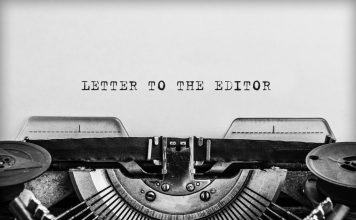When I read this sentiment penned by J. Oswald Sanders,
”
Eyes that look are common; eyes that see are rare,
”
– I am reminded of the story of Helen Adams Keller.
When I read this sentiment penned by J. Oswald Sanders, “Eyes that look are common; eyes that see are rare,” – I am reminded of the story of Helen Adams Keller.
Born with all her senses intact, Keller contracted a severe illness as a toddler that took away both sight and hearing. By the time she was 7, Helen had become such a stubborn, strong-willed, run-the-household prankster that her parents felt compelled to find a suitable teacher to manage and civilize her. Enter Anne Mansfield Sullivan.
The remarkable Miss Sullivan was only 21 when she arrived at the Keller home on March 3, 1887. Possessing a deep well of wisdom beyond her tender years, Miss Sullivan did not come to teach Helen reading, writing and arithmetic. She instead yearned to light a fire for knowledge in the heart of this child, to arouse within her a spirit of adventure.
In her autobiography, “The Story of My Life,” Keller recalls her initial mischievousness. “After my teacher, Miss Sullivan came to me, I sought an early opportunity to lock her in her room. I went upstairs with something which my mother made me understand I was to give to Miss Sullivan; but no sooner had I given it to her than I slammed the door, locked it, and hid the key under the wardrobe in the hall. I could not be induced to tell where the key was. My father was obliged to get a ladder and take Miss Sullivan out through the window – much to my delight. Months after, I produced the key.”
In a scene reminiscent of Nanny 911, Sullivan rose to the challenge. She received permission to remove Helen to a nearby cottage annex on the family grounds. The experiment had its rough moments. Helen was homesick; her father took to sneaking peeks through the window, once nearly firing Miss Sullivan when he saw what a wreck Helen had made of the place. But then came the breakthrough at the well. As Anne poured water over Helen’s hand, Anne spelled out the word in the girl’s free hand. Something about the exercise explained the meaning of words within Helen, and such excitement was ignited in Helen that she recorded, “It would have been difficult to find a happier child than I was as I lay in my crib at the close of that eventful day and lived over the joys it had brought me, and for the first time longed for a new day to come.”
Keller’s story reinforces the power of the human spirit. Through sheer resolve, she mastered the ability to communicate by spelling words with hand gestures and by touching the lips of those who spoke to her. Learning three types of Braille, she went on to conquer French, German, Greek and Latin. She attended the Cambridge School for Young Ladies and graduated with honors from Radcliffe College in 1904.
Sanders had it right: Many people do look without seeing and hear without understanding. In spite of her outward limitations, though, Helen Keller possessed an inner spirit that both saw and heard.
Climbing optimistically out of the valley of what she called her “two-fold solitude,” Helen wrote, “Is it not true, then, that my life with all its limitations touches at many points the life of the world beautiful? Everything has its wonders, even darkness and silence, and I learn, whatever state I may be in, therein to be content.”
Keller understood life’s magnitude and magnificence.












